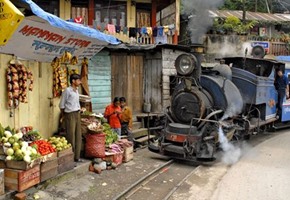One hundred years ago, on the eleventh hour of the eleventh day of the eleventh month of 1918, Germany signed an Armistice with the Allies, marking the end of World War One and bringing four years of incomprehensible violence, suffering and conflict to an end. November 11th is recognised as a day of respect and remembrance for the fallen soldiers who gave their lives to fight for freedom, and the day is acknowledged around the world with ceremonies, two minutes' silences, and the emblematic red poppy - a poignant nod to John McCrae's evocative WW1 poem, "In Flanders Fields", where, he wrote, "poppies grow".
Today, there are a number of historic sites and moving memorials that one may visit if they wish to pay their respects, or simply gain a deeper understanding of the intriguing history of the war. Visiting these tragic sites affords a silent but affecting reminder of the atrocities of war, and the sacrifices that were made by those who fought. In recognition of the upcoming Armistice Centenary, we would like to share four of the most touching and interesting Great War travel locations, from significant battlefields to emotional war monuments.
Somme Battlefields, France
One of the most infamous and iconic sites of the First World War, the Somme incorporates a number of WW1 sites and is recognised as the location of one of the fiercest and bloodiest military battles fought in human history. Here, between July and November 1916, the famous Battle of the Somme took place. Over five months, British and French soldiers attempted to break through the German lines, aiming to exhaust the opposition and advance upon their territory. The attempts were mostly futile, and the battle is known as one of the most costly and devastating in history, with over one million deaths including almost 60,000 British casualties on the first day alone. Today, many traces of the horrors of years past can still be found here, including original sections of preserved trenches, and the huge Lochnagar Crater, the result of the detonation of a mine in July 1916 which was, at the time, one of the largest mines ever detonated.
Menin Gate, Ypres
Although walking through the streets of Ypres feels much like exploring an ancient city, the buildings here are not original; years of destruction during the war meant that the city had to be painstakingly restored to its former beauty. The areas around the city of Ypres contain a number of monuments that record the tragic events of the Great War, including the sentimental "In Flanders Fields" museum and the moving Menin Gate. The Menin Gate Memorial to the Missing acknowledges the 54,896 fallen British and Commonwealth soldiers who were killed in Ypres Salient, and whose burial sites sadly remain unknown. Every evening at the stroke of eight, visitors to Menin Gate can observe the evocative Last Post Ceremony; a solemn tribute to the fallen which sees volunteer Buglers raise their instruments to play the haunting 'Last Post' - a simple but meaningful tribute to the horrendous loss of life endured here.
Tyne Cot, Belgium
Tyne Cot Commonwealth War Graves Cemetery and Memorial to the Missing is the largest Commonwealth war memorial and cemetery in the world and serves as an important reminder of the enormity of the human sacrifice of the war. Located just outside of Passchendaele, near Zonnebeke in Belgium, the sheer size of the beautifully maintained Tyne Cot Cemetery is astounding; 11,956 WW1 servicemen are buried or commemorated here, and the sorrow elicited by the rows of pristine white headstones is further underscored by the fact that many of the soldier's identities are unknown, with their graves marked simply "Known unto God". Just beyond the neat rows of headstones, the Memorial to the Missing forms a part of the cemetery's north-eastern boundary, and is inscribed with the names of over 34,000 soldiers who were declared missing in action, and who have no known grave.
In Flanders Fields Museum, Ypres
Perhaps best known as the subject of one of history's most famous war poems, Flanders Fields encompasses an area known as the Western Front in the medieval County of Flanders, which straddles the borders between southern Belgium and north-west France. Historically, Flanders Fields was a great World War One battlefield where around a million soldiers battled - including Canadian Lieutenant Colonel John McCrae, the author of the famous war poem, "In Flanders Fields". Today, the area is filled with emotional reminders of the Great War, one of the most touching being the In Flanders Fields Museum in the famous Cloth Hall in the centre of Ypres. The insightful museum is dedicated to the study of WW1 and highlights the terrible futility of war, with detailed exhibitions which display artefacts from the period allowing visitors to step back in time and better understand the lives of those changed irrecoverably by the Great War.





